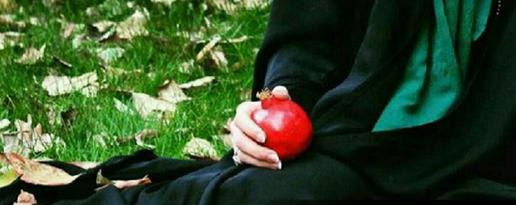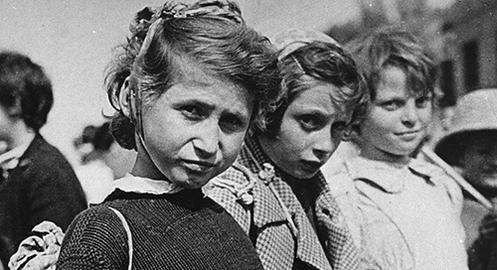In Iran, the lives of women continue to change, as they have done for decades. But it is not only women who overtly and publicly embrace new ideas, who are visible in their work for equality — the perceived “new generation” of women — whose lives are changing. It’s religious women, women who live in rural environments, and women who observe traditional customs, too. Changes in their lives may not be dramatic, but there are changes nonetheless.
A recent study looking at women living in religious and traditional environments confirms this. The academic research assessed the levels to which these women have acquired agency over what they do and how they live and found that although changes are gradual and subtle, they are definitely evident.
The report, "Cracking Walls: The Slow Progress of Women in Action," published by the University of Mazandaran’s Sociology of Social Institutions quarterly journal, outlines how women living in some of Iran’s more traditional environments have been talking about the right to divorce for years, while others are demanding the right to custody of their children.
These changes have taken place gradually over the years, and the outward appearance reflects the changing views of a significant number of women from these communities on a range of issues: from marriage to motherhood, to body image and protection, to how they behave and see themselves as consumers and how they spend their leisure time. A considerable number of them are important spenders in this sector, particularly since some of them have a certain degree of disposable income, willing to spend money on fashion clothing, cafes, decorating their houses with furniture from abroad, international travel, well-being and beauty treatments, among other products. A greater number of them are on social media, where they can both be influenced and influence others. A significant number of them have changed the way they dress: although they still wear the Islamic hijab, today there are huge options regarding what this traditional head covering looks like. Furthermore, they have changed other aspects of their clothing, and are also seen in public wearing make-up.
Unsurprisingly, some religious hardliners reject these new approaches to lifestyle, casting them off as "new versions of Islam" (and going on to Twitter to say as much). They demand to know why these women’s lives seem to be shaped in the cafes and sports stadiums instead of in the seminaries and mosques.
In particular, clerics have voiced alarm about the different types of hijab women are wearing today, and accuse women of “showing off” or trying to “display their charms”.
The details of the changes in appearance and the lifestyle of religious girls and boys go far beyond what may seem believable at first glance, but these people live in a society that is being completely uprooted and is gradually abandoning many of the dominant values derived from religious beliefs. The research found that women have gradually begun to embark on changing aspects of their lives, even within the traditional, customary, and religious norms that have typically and historically guided them.
The Right to Divorce and to Life Beyod the Home
Chief among the rights these women have achieved is the right to divorce. It may not be as easy to divorce in Iran as it is in many places in the world — and even within Iran outside these more traditional communities — but it is now possible. And divorce is on the increase. In fact, many women demand the right to divorce even before they take their vows, almost in the manner of a pre-nuptial, or at least a pre-requisite.
The report says women in Iran are increasingly gaining “agency”, which it defines as the capacity to take independent action in the face of often overwhelming cultural sanctions and inequalities of a patriarchal structure.
The research looks at women in traditional communities in both Iran and Turkey, and is based on interviews with 50 women, including from lower socio-economic groups.
The study states that the interviews reeals that, despite all the restrictions in their lives, these women have been able to pursue some of their aspirations and are increasingly able to exercise their own will and make individual decisions, despite the patriarchal systems in place.
They also defended their freedom of action outside the home, saying they want financial independence to help support the family economy. The women interviewed revealed that they gave less value to gender relations than assumptions might have suggested and do not define their roles as only being wives or mothers.
Some of those interviewed stated when it came to childbearing, they insisted they must have the right to choose when they had children, and emphasized that decisions about having children should depend heavily on their mental and physical health.
The Contribution Muslim Women Make, and the Clerics' View
Generally it is assumed that women from traditional Muslim communities make a tiny contribution to the fundamental change in gender relations in these patriarchal societies, if at all. But the new university-led study indicates that these women have become aware of their rights, at least to a certain degree, and are trying to play a greater role in individual, family and community decisions. They are, the report says, forging new identities.
Women’s power and agency to decide and determine the direction their lives take is more visible, well-developed and resilient among middle-class women in Iran, not least because these women are generally more linked to ideas, news, and developments outside their private experience and are well versed about global values and standards of equality and gender rights. Whether it’s these women or the women interviewed as part of this new research, there is a strong movement from conservative clerics, politicians and activists in Iran to prevent these efforts and beliefs from taking hold.
Clerics have worked hard to link women’s integrity to their place in the patriarchy, to how they operate as mothers and wives. This means how they interact socially and how they behave in public — how they look, speak, think — is always under scrutiny. At the same time, it makes them objects, sexual and otherwise, which make the very integrity they are supposed to be achieving impossible, or at least deeply problematic.
The recent study about Iranian women today suggests that although women’s behavior over the last 40 years has adhered to a patriarchal understanding of women in the Islamic Republic, at the same time, these women have helped shape this understanding. And now, contrary to the general assumptions and stereotypes about them, Iranian women are gradually joining the ranks of women who demand basic human rights.
Despite the many fears, pressures, and limitations in changing their absolute passive position, they are at the same time trying to get rid of this position in new ways, which are not necessarily seen by the public as norm-breaking or unconventional.
Women living more conventional lives in more traditional environments and cultures within Iran are challenging, in small ways, the institutionalized rules, structures, and stereotypes that have previously ruled their lives.
It could be argued that a quiet rebellion is taking place, and a new feminism has begun to emerge.
Related coverage:
Decoding Iran’s Politics: History of the Ban on Women Attending Football Matches
Iranian Men Mobilize Against Honor Killings
New Report on Iranian Women and Work Reveals Rise in Unemployment and Discrimination
visit the accountability section
In this section of Iran Wire, you can contact the officials and launch your campaign for various problems


























comments